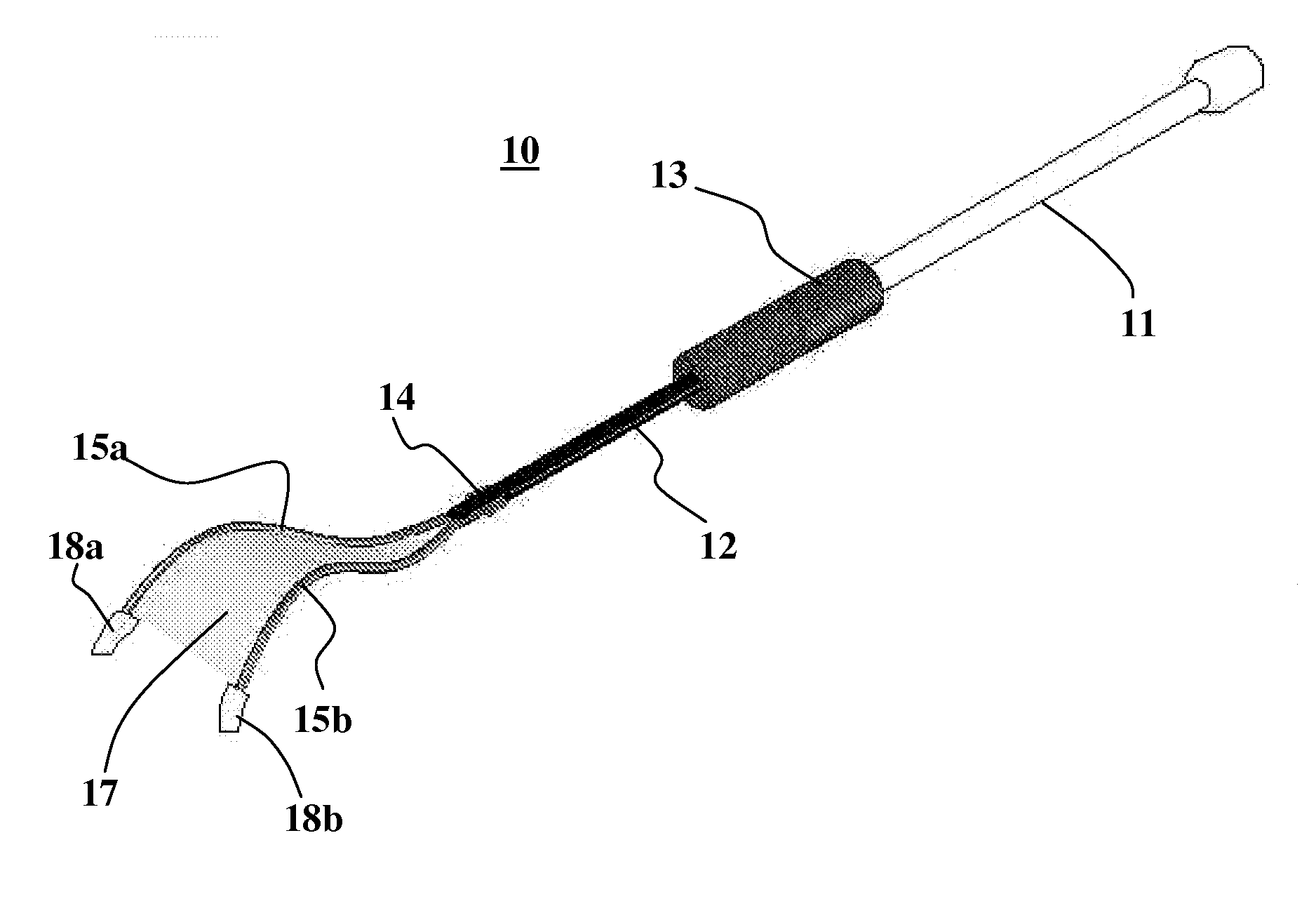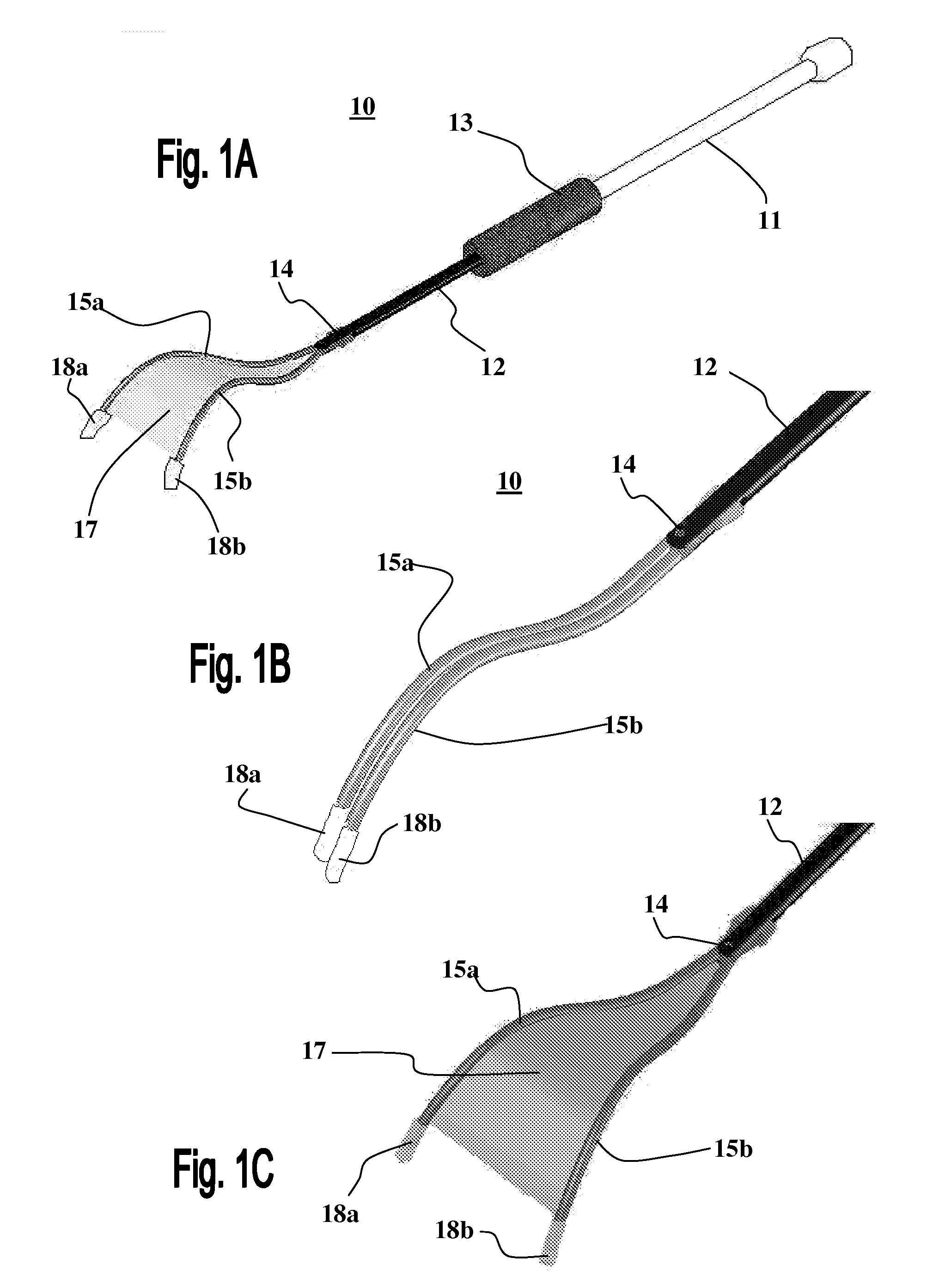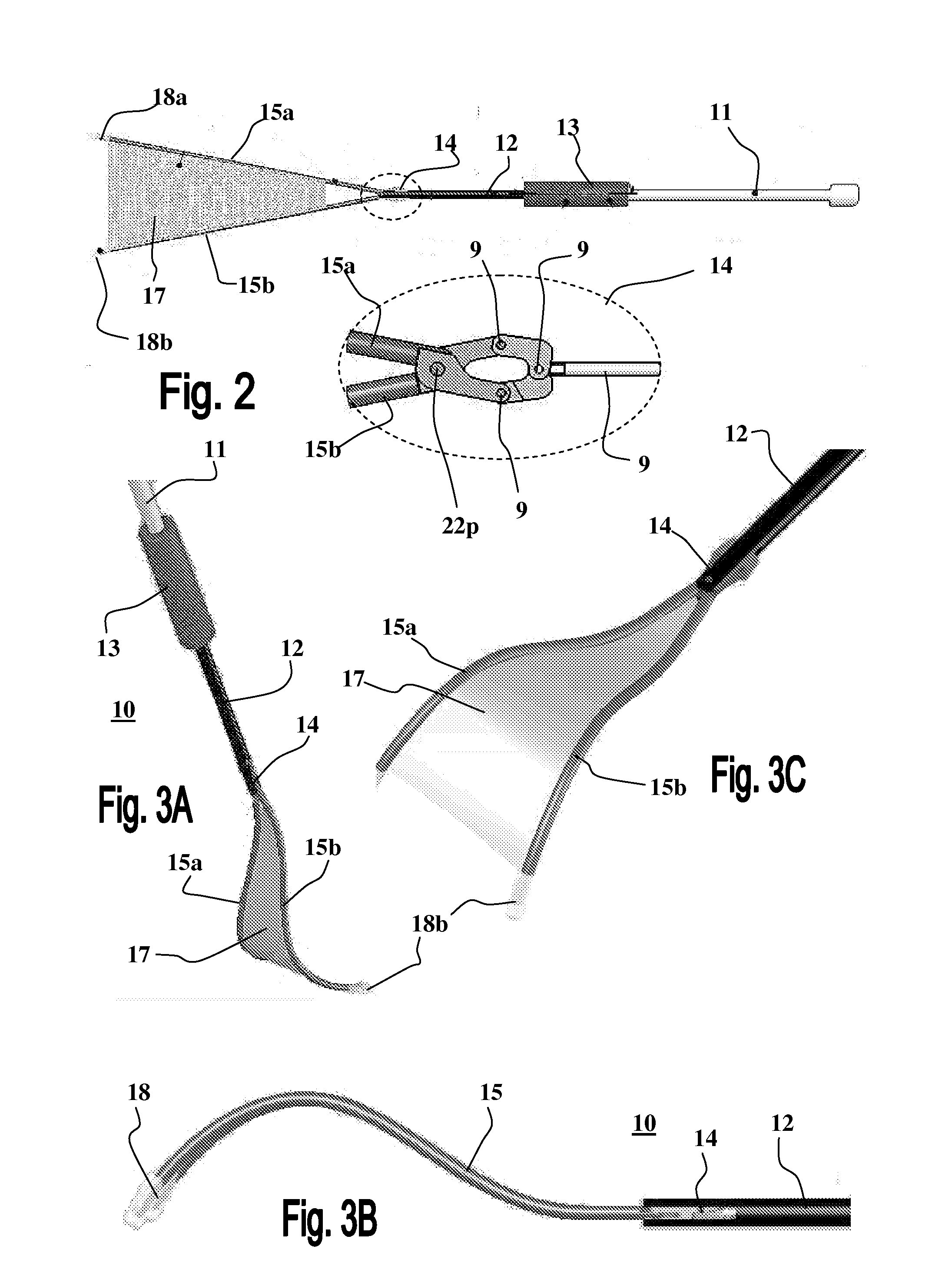Laparoscopic tissue retractor
a tissue retractor and laparoscopic technology, applied in the field of laparoscopic surgical retractors, can solve the problems of affecting the delicate tissue of the grasper, blood vessels and nerves, and the grasper may not be released for a significant amount of tim
- Summary
- Abstract
- Description
- Claims
- Application Information
AI Technical Summary
Benefits of technology
Problems solved by technology
Method used
Image
Examples
Embodiment Construction
[0096]There is, therefore, provided according to the present invention, a novel type of self-retaining tissue retractor, inserted into a body cavity while in a contracted conformation (i.e. having a much smaller size than while in the open conformation). Following delivery to the desired surgical treatment area, the closed device is opened, thereby allowing the surgeon use the device to retract organs, thereby creating a discrete workspace (the surgical window).
[0097]The purpose of the device of the invention is to widen the access area to the treatment site (the surgical field), to retract the surrounding tissues, to maintain the resultant size of the access area and to protect the retract tissue or organs by shielding them with the sheet.
Additional Purposes of the Invention Are:
Reduction of the Gas Insufflation Pressure
Obviation of the Need for the Trendelenburg Position (or at Least Use of a Lower Incline).
[0098]The device of the invention allows the surgeon to comfortably and sa...
PUM
 Login to View More
Login to View More Abstract
Description
Claims
Application Information
 Login to View More
Login to View More - R&D
- Intellectual Property
- Life Sciences
- Materials
- Tech Scout
- Unparalleled Data Quality
- Higher Quality Content
- 60% Fewer Hallucinations
Browse by: Latest US Patents, China's latest patents, Technical Efficacy Thesaurus, Application Domain, Technology Topic, Popular Technical Reports.
© 2025 PatSnap. All rights reserved.Legal|Privacy policy|Modern Slavery Act Transparency Statement|Sitemap|About US| Contact US: help@patsnap.com



